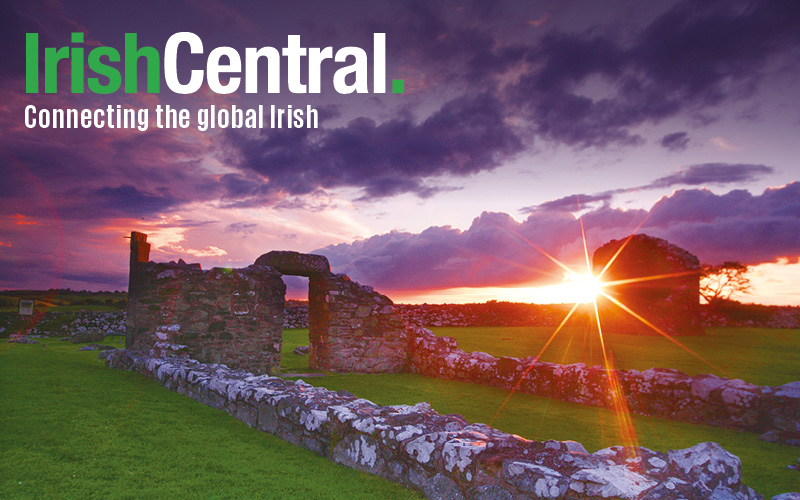The Irish border was never the only obstacle to bringing Belfast and Dublin closer together.
No, the problem was the narrow, twisting road between the island’s two biggest cities. The 103-mile trip could take four hours. It involved endless roundabouts in Newry, a long series of traffic lights in Dundalk and sometimes a two-mile tailback at Drogheda.
You lost ten minutes if you came upon a village church as parishioners piled into cars after a service. Those of us old enough can remember another tiresome obstacle, the customs post on the bleak windswept road at Killeen in South Armagh where officials checked cars and lorries to make sure we were not smuggling butter or pigs.
In those innocent days before the Troubles the Automobile Association handbook devoted four pages to the requirements for crossing the border, one of which involved filling out a complicated triptique form.
It also warned that customs officials might seize an undocumented car using an “unapproved” border road. There was never a passport check at Killeen, but we northerners knew we had traversed the actual border when the reasonably good tarmacadam of the north gave way to the pot-holed surfaces of the south.
During the Troubles this became one of the most dangerous little stretches of roads in Northern Ireland. On November 27th, 1971, the IRA blew up the customs post, then ambushed a British Army patrol that came to investigate, but their gunfire killed instead Jimmy O’Neill, a 45-year-old cleaner, and Ian Hankin, a 26-year-old customs officer. Sixteen more people were to lose their lives to political violence at this border crossing in the following years, including Northern Ireland’s 74-year-old Chief Justice Maurice Gibson and his 67-year-old wife Cecily, who died on April 28th, 1987, when a Provisional IRA bomb exploded as they drove past. The last victims were 44-year-old heating contractor, Robert Hanna, his 44-year-old wife Maureen and seven-year-old son David, who were killed when an IRA landmine exploded beneath their car at Killeen on July 23rd 1988.
They were returning to their home in Hillsborough, Co Down from Dublin airport after a holiday in the United States and the 1,000 lb bomb had been intended for Northern Ireland High Court judge Eoin Higgins, also returning from a US vacation. The customs posts were abandoned in 1992 when the European Single Market came into effect, and British Army checkpoints were removed after the IRA ceasefire, but you still could get caught up at Killeen in a long tailback behind a slow-moving tractor or muck-spreader.
All that has now changed, changed utterly. Over the last decade, flush with capital funds, the Republic has been developing a network of motorways, including the M1 from Dublin to the border. On Thursday the opening of the last 12-kilometre stretch, by-passing Newry, linked the M1 to the A1 dual carriageway to Belfast. Now as you glide past Killeen on the low-noise, porous motorway asphalt at 70 miles an hour the only evidence that you have crossed into another jurisdiction is that the signage changes from miles in the north to kilometres in the south.
The once-clogged country road at Killeen has been reduced to a quiet service area. Its two garages and chip shop will survive, the locals told me on Thursday, because Irish motorways have, as yet, no service stations, and drivers can still get euros for the toll booths in the south at a tiny white cottage with large yellow plastic sign identifying it as a Bureau de Change.
The nearby three-star Carrickdale Hotel, popular as a “pit stop”, will likely remain popular with cross-border shoppers from distant parts of the Republic who come to take advantage of lower prices in the North. Today those distances are not so intimidating. Apart from one toll booth at the Boyne River bridge there isn’t a single traffic light between the center of Belfast and the heart of Dublin and the journey has been reduced to an hour and a half. Indeed there isn’t a traffic light between Belfast and Cork, 213 miles to the south. Once nine hours away, Cork is now reachable from Belfast in less than half that time.
The opening of the last stretch of highway linking Dublin and Belfast on Thursday was performed by the Taoiseach Brian Cowen and the Deputy First Minister of Northern Ireland, Martin McGuinness. Besides bringing the two cities symbolically closer, the completed highway makes Ireland a more attractive place for trade, investment, business and tourism, said Cowen, who quipped that if the economy was all about swings and roundabouts they at least they had got rid of the roundabouts. Referring to dissident republicans still active in South Armagh Cowen said, “They are not relevant in this situation. Added McGuinness, “They need to come and look at this road today and see what the future is like.”




Comments